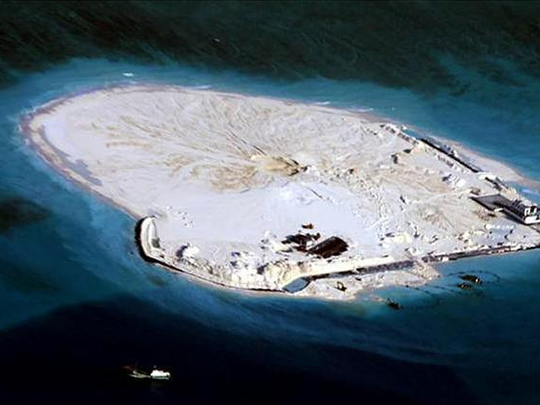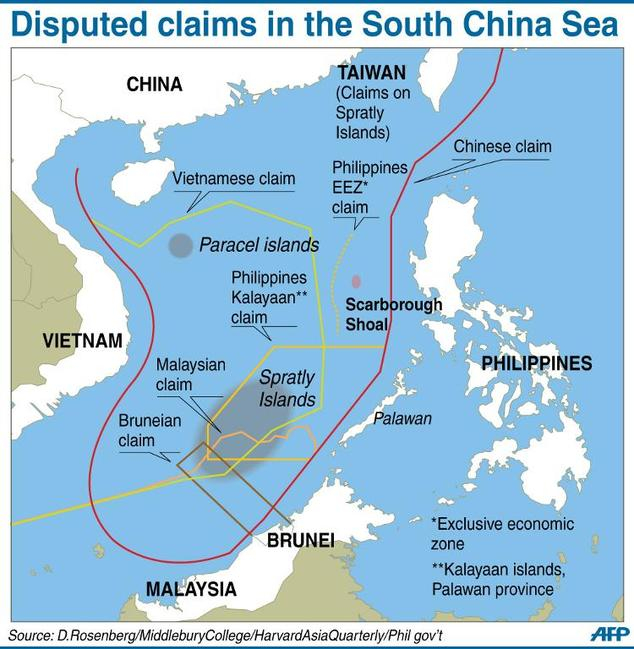
Beijing: China on Thursday sketched out detailed plans for the islands it is creating in the disputed South China Sea, saying they would be used for military defence as well as to provide civilian services that would benefit other countries.
Chinese Foreign Ministry spokeswoman Hua Chunying told a news briefing that the reclamation and building work in the Spratly archipelago of the South China Sea was needed partly because of the risk of typhoons in an area with a lot of shipping that is far from land.
“We are building shelters, aids for navigation, search and rescue as well as marine meteorological forecasting services, fishery services and other administrative services so as to provide the necessary services to China, neighbouring countries and individual vessels sailing the South China Sea,” Hua said.
Hua said the islands and reefs would also meet the demands for China’s military defence, although she did not elaborate.
China's claim to much of the South China Sea conflicts with claims by the Philippines as well as those of Brunei, Malaysia, Taiwan and Vietnam.
It’s rare for China to give such detail about its plans for the artificial islands. The rapid reclamation taking place on seven reefs has alarmed other claimants and drawn US criticism, including from Defence Secretary Ash Carter, who is visiting Japan and South Korea this week.
“The relevant construction is a matter that is entirely within the scope of China’s sovereignty. It is fair, reasonable, lawful, it does not affect and is not targeted against any country. It is beyond reproach,” Hua added.
China claims most of the potentially energy rich South China Sea, through which $5 trillion (Dh18 trillion) in ship-borne trade passes every year. The Philippines, Vietnam, Malaysia, Brunei and Taiwan also have overlapping claims.
All but Brunei have fortified bases in the Spratlys, which lie roughly 1,300km (810 miles) from the Chinese mainland but much closer to the Southeast Asian claimants.
While China’s new islands will not overturn US military superiority in the region, workers are building ports and fuel storage depots as well as possibly two airstrips that experts have said would allow Beijing to project power deep into the maritime heart of Southeast Asia.
Mischief Reef
Hua’s comments came hours after a Washington-based think tank published new satellite images that show China is quickly reclaiming land around Mischief Reef in the Spratlys within an area the Philippines regards as its exclusive economic zone.
The work on Mischief Reef is China’s most recent reclamation.
A March 16 image published by the Center for Strategic and International Studies (CSIS) shows what it said were a chain of small artificial land formations as well as new structures, fortified seawalls and construction equipment along Mischief Reef.
Several dredgers are also present while the entrance to the reef had been expanded, the CSIS Asia Maritime Transparency Initiative said on its website. An image from February 1 showed a Chinese amphibious transport naval vessel several hundred metres from the reef’s entrance.
CSIS said such a ship was capable of holding up to 800 troops and as many as 20 amphibious armoured vehicles.
Surveillance photos taken of Mischief Reef in October and seen by Reuters showed no reclamation work.
Asked about Mischief Reef in light of the images, Carter said he did not want to speculate on China’s future plans but added that the militarisation of territorial disputes in the South China Sea could lead to “dangerous incidents”.
“It’s not just an American concern but a concern of almost every country in the entire region,” Carter told reporters before leaving Japan for South Korea.
China’s Hua said that “recent erroneous and negative comments made by individual countries” missed the point.
“China adheres to the path of peaceful development and carries out a defensive national defence policy. Maintaining peace and stability in the South China Sea is in keeping with the development and security of China,” she said.
The Philippines first said in February that Chinese dredgers had started work at Mischief Reef, 216km (135 miles) west of the Philippine island of Palawan.
China occupied Mischief Reef in 1995. The October photos showed two structures, including a three-storey building sitting on an atoll.













